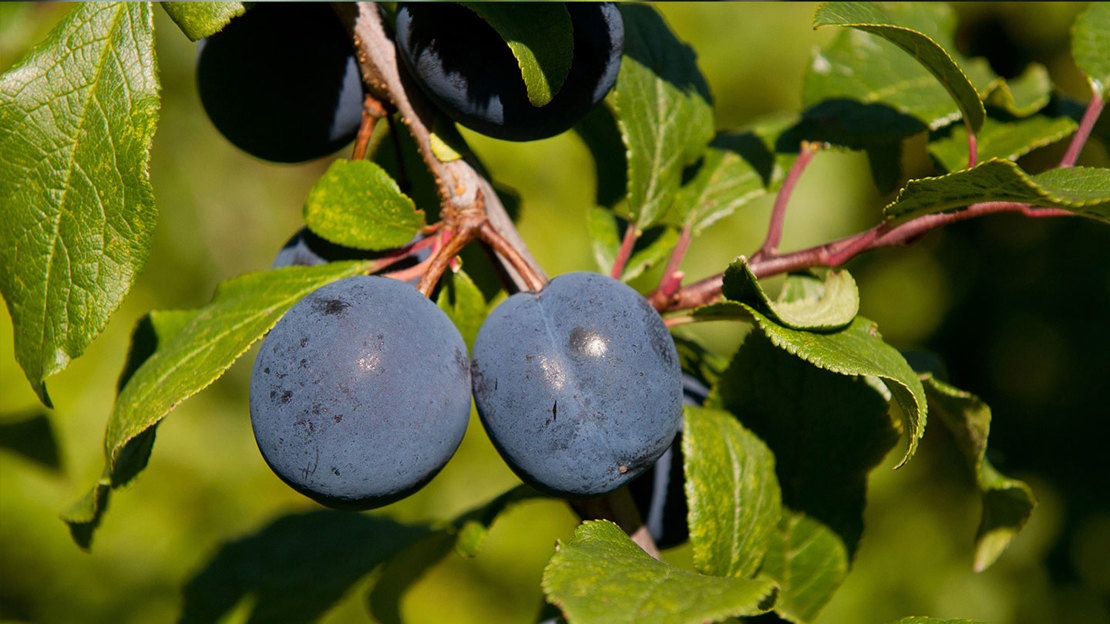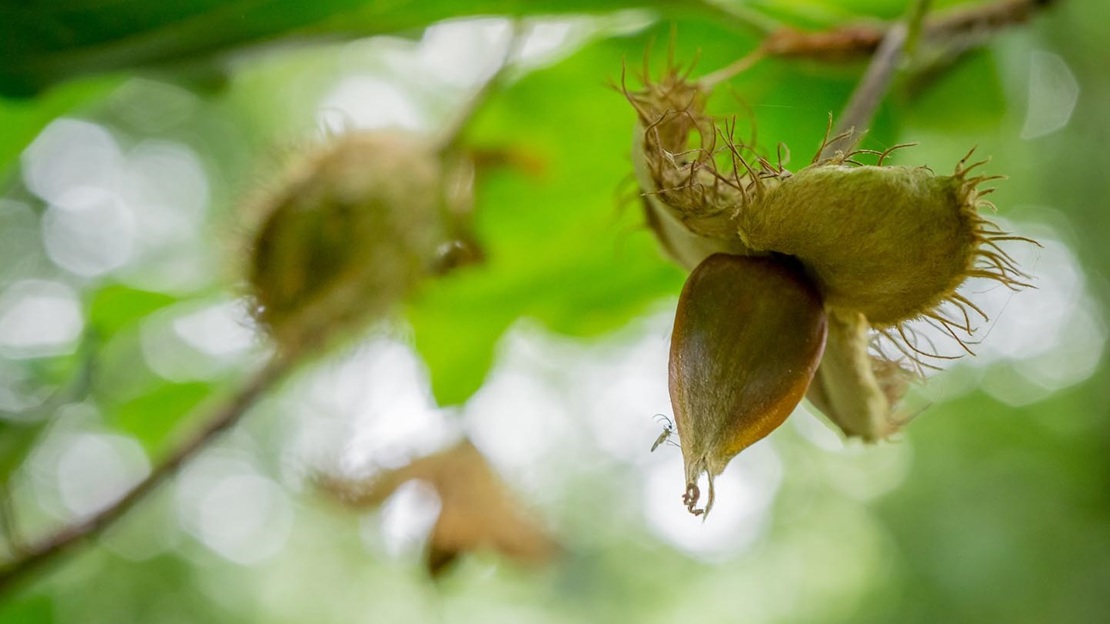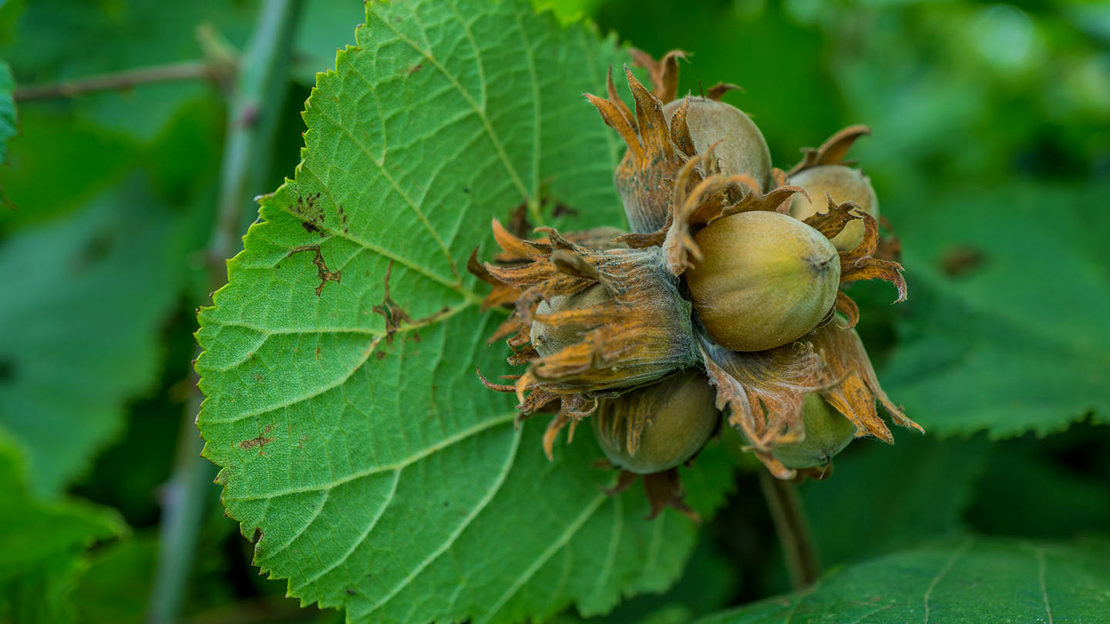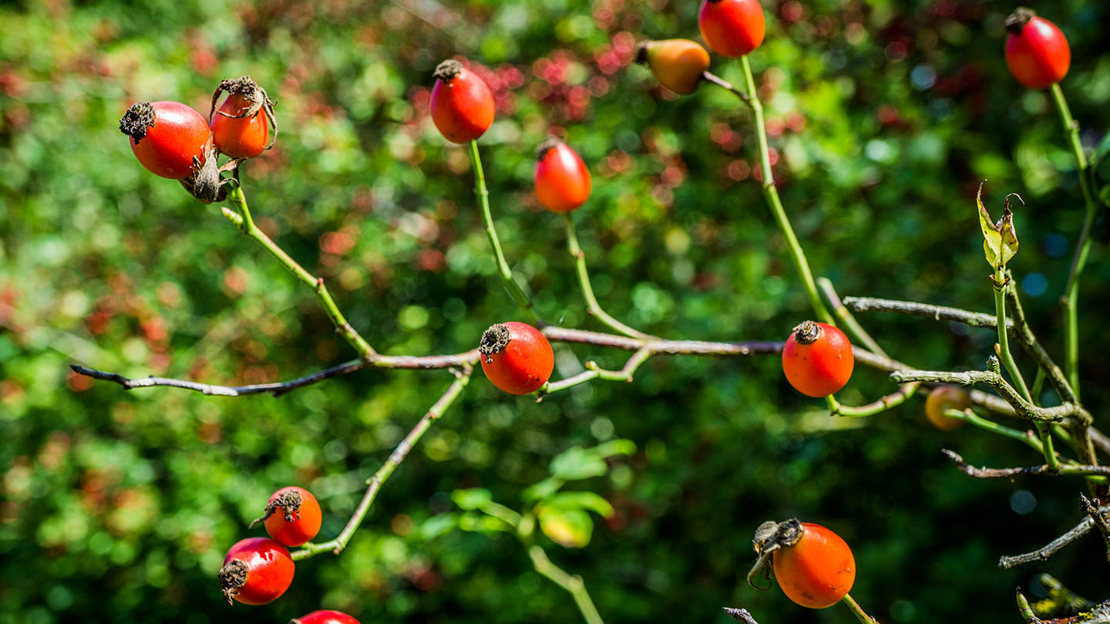Spot the signs of the seasons
Let us know what's happening to animals and plants near you and help scientists track the effects of climate change on wildlife.
Explore Nature's Calendar
Digital content editor
As the leaves begin to bronze as nature winds down for winter, a medley of edible nuts and berries are ripening in our woods, parks and hedgerows.
Here are our top foraging finds for October in the UK, from vitamin C-packed rosehips to tasty nuts.
Please remember to only take what you absolutely need from places with a plentiful supply, and only pick what you can identify with certainty. Read our sustainable foraging guidelines for more advice.

Bullace is a type of wild plum which produces tart fruits. On a good year, these fruits can literally weigh down the hedgerow.
Bullace fruits are similar to damsons and can be used to make crumbles, jams and preserves, fruit wine and fruit liqueurs like sloe gin.
The small, oval fruits of bullace are usually blue, purple or black in colour. They tend to taste acidic until they're ripe. This is a great late-season fruit as it ripens several weeks after many others, usually from October to November.

Beech nuts are still ripening into October, making this a great time to forage for them. They're a bit small to collect in large numbers but make a tasty nibble on an autumn walk.
Scraping off the outer brown skin will reveal the triangular seed. If you do collect more than a few, they can be sprinkled onto salads and risottos, or roasted in the oven. Once roasted, place the seeds between two tea towels and rub to remove shells. Just be aware that beech nuts can be slightly toxic if consumed in large quantities due to the tannins and alkaloids.
Beech nuts appear as three-sided, bristly cases from mid-September throughout October.

A common tree in woods, hedgerows and gardens, hazel bears its crop of nuts (also called cobnuts and filberts) from late August.
If you collect enough, the shelled hazelnuts can be roasted in the oven or used to make hazelnut butter. The nutty flavour makes them a natural pairing with chocolate in cakes or biscuits, but they can also be scattered on salads or yoghurts or used as a base for a stuffing.
Hazelnuts start out green but turn brown as they ripen through September and October. You’ll know when they’re ready to pick as the nuts will easily come loose from the husks.

Best known for their use in flavouring gin, juniper berries form from the seed cones of the juniper tree – a conifer often found on chalk lowland, moorland and rocky areas.
Juniper can add its unique flavour to casseroles, marinades or stuffings by either crushing the berries or using them whole. They can be used fresh but you can also dry them by placing them in a cool, dry place for a couple of weeks.
Juniper berries ripen through autumn and into December, going a deep shade of blue or purple. The full ripening process takes around 18 months, so you won’t find the berries on an individual tree every year.

Rosehips are the red and orange seed pods of rose plants commonly found in hedgerows.
The hips have a fleshy covering that is packed with vitamin C and renowned for helping stave off colds. They are good in wines, jellies, jams and can be used to make a delicious rosehip syrup for cordial or pouring onto ice cream or pancakes.
Hedgerows are one of the best places to look for bright red rosehips from September to November. Snip the hips close to the base of each pod to avoid the thorns.

From the same family as plums and cherries, sloes are the tart, acidic fruits produced by blackthorn bushes, commonly used to make the deep-red wintry drink, sloe gin.
The best time to pick sloes is after the first frost, as the cold softens the skins and helps to release the juices. You can get round this by picking the berries early and freezing them at home instead. Make our classic sloe gin recipe or try using sloes for whisky, jams, jellies or vinegar.
Sloes turn blue-black when ripe, usually beginning in September. They can be found through the autumn months along hedgerows and fields, lasting into December.

October is one of the best months to forage for the shiny, reddish-brown fruits of the sweet chestnut tree, giving you a great chance to stock up for roasting at Christmas.
The nuts can be baked, roasted, boiled or microwaved. Remember to score a cross in them to stop them from exploding when they are cooked. Once cooked and peeled they can be used in desserts and stuffings. You can also candy them, puree them or store them in syrup.
You’ll find the best crop at the foot of large established trees, which start dropping nuts from October into late autumn and early winter. A good tip is to forage for sweet chestnuts after windy weather, looking for husks which have already split.

Walnut trees were first introduced to the UK by the Romans and have since naturalised in lowland regions.
Crack open the shells to get to the nut. They can be eaten raw when they're fresh, or they can be dried or pickled. Dried walnuts can be stored for around a year. They can be added to both sweet and savoury dishes.
Walnut trees can be found throughout the UK, often in large gardens and parks. The nuts are covered with a green, fleshy husk that starts to split as it ripens. Pick them in late autumn.
Let us know what's happening to animals and plants near you and help scientists track the effects of climate change on wildlife.
Explore Nature's Calendar